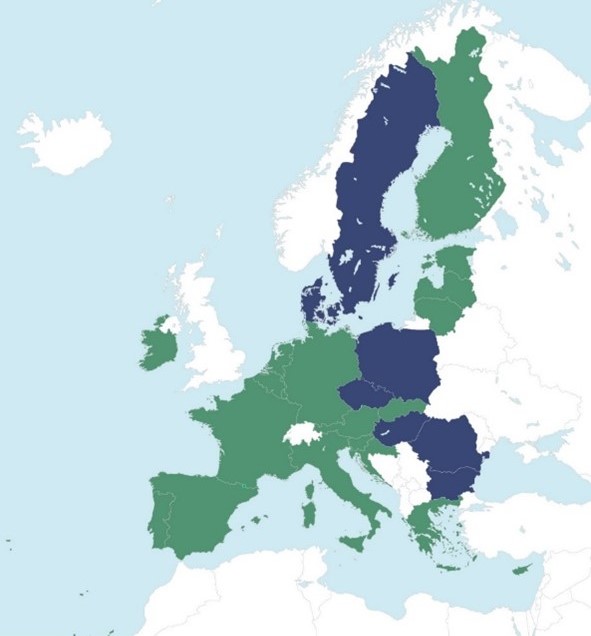Putting price changes in perspective: the evolution of the consumer price index
This article looks at the evolution of the consumer price index, from its inception in 1919 to today.

The term “consumer price index” is often mentioned along with another commonly used term, “inflation”. What is the relationship between these two concepts? How has the consumer price index in Belgium evolved since its creation? And what does the term inflation actually mean? This article accompanies our latest animated video, available in Dutch and French, and addresses these questions by providing an overview of how the consumer basket has changed since its inception in 1919.
Inflation means a general rise in the prices of goods and services. In other words, inflation makes your money worth less. If you can buy less with the same amount of money, your purchasing power has decreased, which is not good for the economy. Central banks therefore have an arsenal of tools at their disposal to keep inflation at a low, stable and predictable rate. This is beneficial for the economy. The consumer price index (CPI) is an economic indicator that measures the overall change in the price of a basket of goods and services, over time. The price difference observed over a defined period, expressed as a percentage, is called the inflation rate. So which goods and services are included in the consumer price index? Well, that’s down to you, the consumer! A representative sample of the goods and services consumed by a typical household is used to make up a so-called “index basket”. Like the consumption habits of the typical household, the composition of this basket has changed over the years.

Market square in Saint-Josse-ten-Noode, 20th century.
The first Belgian consumer price index dates back to 1919 and was introduced by Joseph Wauters, who served as minister for military supply-chain management and subsequently minister for labour and industry. When the index was published in 1920, it contained only a small number of goods: 56 products in all, most of which were comestibles such as eggs, chocolate, and coffee, along with other goods such as coal and even a bowler hat. Unlike the current index, all goods in the basket were weighted equally at the time. Despite this lack of differentiation, the index already had a practical objective, namely, to maintain purchasing power, defined as the ability to acquire certain goods with a certain amount of money. Purchasing power falls when prices rise too steeply unless wages and benefits keep pace.
One reason for the creation of the consumer price index was to adjust wages and various benefits to the cost of living. Since 1919-1920, this purpose has not changed, although the index itself has clearly evolved. The basket was revised for the first time in 1939, to reflect changes in household consumption habits. Candles and olive oil were thus removed from the basket while apple sauce, ham and cheese were added to it. In 1955, services were included in the basket for the first time, including a cinema ticket, a haircut, and public transport tickets. In the following years, the service economy came to take up an increasingly large share of the basket. In the 1960s, consumerism spread to all walks of life. A thorough household survey paved the way for a doubling in the number of goods and services in the basket in 1968. The bowler hat dropped out of the basket, but many other products were introduced, including baked goods, toothpaste, soft drinks, wine, yoghurt and Belgium’s illustrious fries. A fourth revision followed in 1976, with the basket again doubling in size in the wake of a household budget survey; for the first time, each product and service was assigned a separate weight. Since then, goods and services have been weighted based on consumer spending patterns. Notable newcomers to the basket are rent and some pharmaceutical products. Following further revisions in 1984 and 1991, the health index was introduced in 1994, which excludes the prices of oil, tobacco products and alcohol, and can be thought of as a “light” version of the consumer price index.
From that point on, only the health index triggers an increase in rent, wages and benefits. Indexation follows when the average value of the last four health indices exceeds that of the pivot index. The latter is a predetermined threshold value which, when met or exceeded, leads to an indexation of wages and benefits.
Alongside these national indices, a third indicator is used to track purchasing power: the harmonised index of consumer prices (HICP). The HICP was conceived as a large-scale economic measure for the entire European Union but is mainly used within the euro area. It measures price movements in a harmonised manner. Indeed, up to 1997, the national indices used by individual countries varied considerably in methodological terms. Each index was subject to specific rules and practices. The first national indices produced in accordance with the harmonised methodology were published in 1997. On this basis, Eurostat (the Statistical Office of the European Union) has been able to compile an HICP for the euro area or for the European Union ever since, thereby allowing for a better understanding of price increases within a selected geographical area. For the Eurosystem, this information is obviously very valuable when it comes to determining a common monetary strategy. Thus, as from 1997, three indices have been used in Belgium: the national consumer price index, the harmonised index of consumer prices and the health index.

Map showing countries belonging to the Eurosystem (green) and to the EU (green and blue).

To deal with the increasingly rapid proliferation of consumer goods and ensure that the consumer basket remains sufficiently representative, the consumer price index has been revised every two years since 2006: the prices of a dishwasher, GPS and gym subscription were successively added via revisions in 2006, 2008 and 2010. In 2012, a revision wasn’t deemed necessary. In January 2014, the consumer price index became an annually adjusted chain index. Each month, prices are compared with those from December of the previous year. In 2015, in addition to traditional price surveys, scanner data from supermarkets was integrated. That year, for example, the iPod was removed from the basket and headphones were added to it. Web scraping, meaning the extraction of data on prices from websites, was introduced in 2019.
Thanks to the use of these new techniques, the index basket now consists of several thousand goods and services – a big jump from the first basket of 56 products in 1920. Curious to know which products have been included over the years? Watch our latest animated video, available in Dutch and French, to find out how the CPI basket has evolved.
Video - Only in French or Dutch
Bibliography
- CORNILLE D., “Een nieuwe nationale consumptieprijsindex en 10 jaar HICP” in Economisch Tijdschrift, Vol. 2006, nr. 1, juni 2006, pp. 29 to 43.
- European Central Bank, Price stability: why does it matter to you, ECB, Frankfurt, 2008.
- The National Bank of Belgium, “Monetary Policy Strategy”, Monetary policy strategy | nbb.be
- Statbel, “De prijsindex”, https://www.belgium.be/nl/economie/economische_informatie/prijsindex.
- Statbel, “Consumer price index”, Consumer price index | Statbel (fgov.be)
- Statbel, “Looking back on 100 years of the index”, Looking back on 100 years of the index | Statbel (fgov.be)